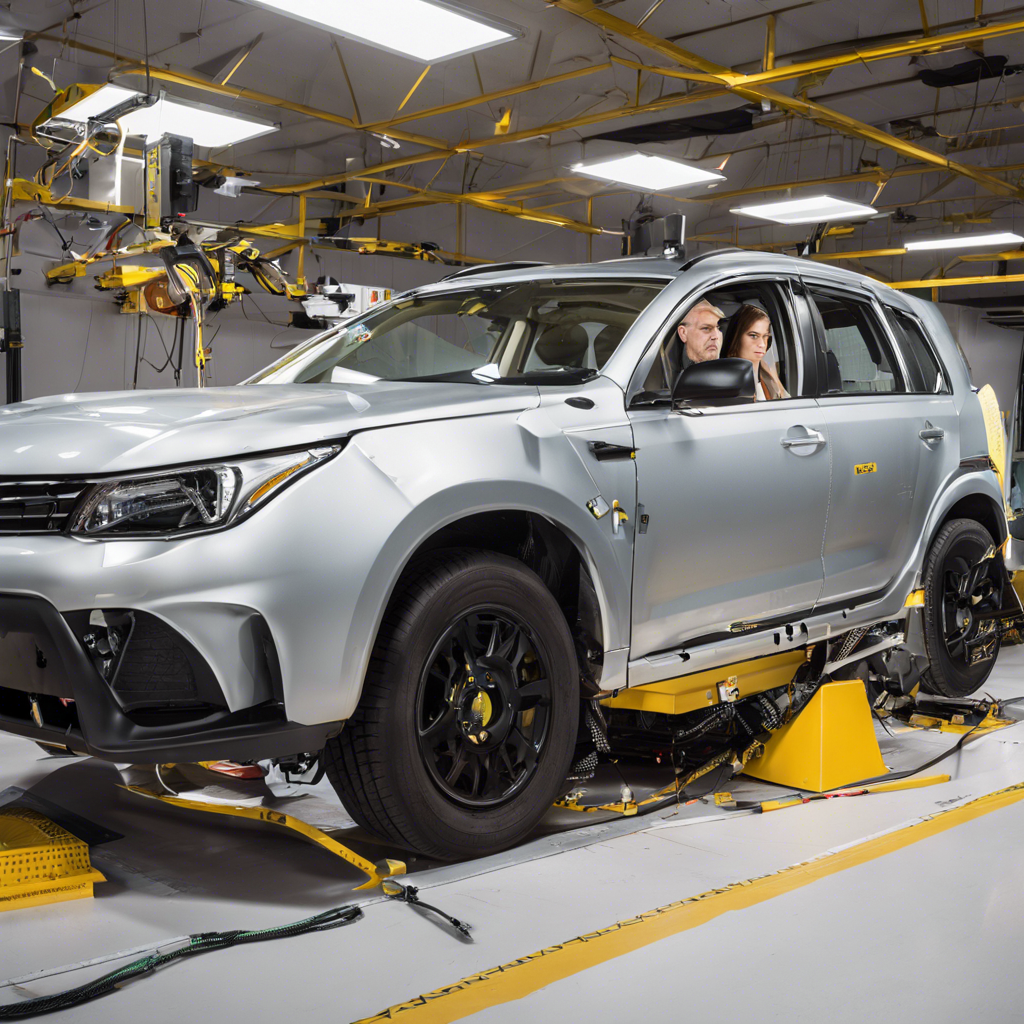The Evolution of Vehicle Safety: Crash Tests as Catalysts for Innovation
In the world of automotive engineering, the quest for improved safety has long been a top priority. Among the arsenal of tools used to achieve this, crash tests have emerged as pivotal in shaping the safety landscape of vehicles. Serving as a bridge between theoretical design and real-world performance, crash tests provide invaluable insights that drive innovation, save lives, and reduce the severity of injuries in accidents.
These tests are not merely about destruction; they are meticulously designed experiments that simulate real-world crash scenarios. Organizations like the National Highway Traffic Safety Administration (NHTSA) in the United States and Europe’s Euro NCAP have been at the forefront of these testing regimes, setting standards and providing consumers with crucial safety information. NHTSA’s car safety ratings offer a transparent view into a vehicle’s safety performance, empowering consumers to make informed choices.
From Concept to Collision: The Crash Test Process
The journey of a vehicle through a crash test is a highly orchestrated affair. It begins with the selection of suitable crash test dummies, anthropomorphic test devices designed to mimic the human body’s response during a collision. These dummies are equipped with sensors to measure forces and accelerations experienced during the test.
Types of Crash Tests
Crash tests come in various forms, each designed to simulate specific crash scenarios:
1. Frontal Impact Tests
These tests involve a vehicle colliding head-on with a barrier or another vehicle, focusing on the structural integrity of the front-end and the potential injuries to occupants.
2. Side Impact Tests
Simulating the impact of another vehicle or object on the side of the car, these tests assess the strength of the side structures and the effectiveness of side airbags.
Uncovering Safety Flaws
One of the most significant contributions of crash tests is their ability to identify safety weaknesses in vehicle designs. By analyzing the data from these tests, engineers can pinpoint areas that need improvement, whether it’s strengthening particular structural components or enhancing the effectiveness of safety features like airbags and seat belts.
The Impact of Crash Test Results
The outcomes of crash tests have profound implications for both manufacturers and consumers.
Driving Innovation
Manufacturers utilize crash test data to guide the development of new safety features and improve existing ones. From advanced driver assistance systems (ADAS) to autonomous emergency braking, many of the cutting-edge safety technologies found in modern vehicles are a direct result of insights gained from crash tests.
Consumer Awareness and Market Influence
Crash test results also empower consumers. Organizations like IIHS (Insurance Institute for Highway Safety) and Euro NCAP publish comprehensive ratings based on crash test performances, allowing consumers to make informed choices. This transparency has driven a market shift towards safer vehicles, as manufacturers strive to achieve top safety ratings.
Frequently Asked Questions
Q: Are all crash tests the same, and how do they vary globally?
A: While the fundamentals of crash testing remain consistent, there are variations in test protocols and standards across regions. For instance, the NHTSA and Euro NCAP employ different test methodologies and rating systems. However, the goal remains the same: to assess and improve vehicle safety.
Q: How often are crash tests conducted, and can vehicle safety be continually improved?
A: Crash tests are conducted at various stages of vehicle development, from pre-production prototypes to post-launch evaluations. As technology advances and new safety features emerge, manufacturers continuously refine and upgrade their models, ensuring safety remains a dynamic and evolving aspect of vehicle design.
Conclusion: A Continuous Journey Towards Safer Roads
Crash tests are more than just a scientific evaluation; they are a cornerstone of automotive safety, driving innovation and informing consumer choices. Through rigorous testing, manufacturers can identify weaknesses, develop advanced safety technologies, and ultimately save lives. As vehicles become increasingly sophisticated, crash tests remain an essential tool, ensuring that the safety of our roads continues to evolve and improve.
